The De Zerbi tweak that saw Brighton outwit Ten Hag and Manchester United
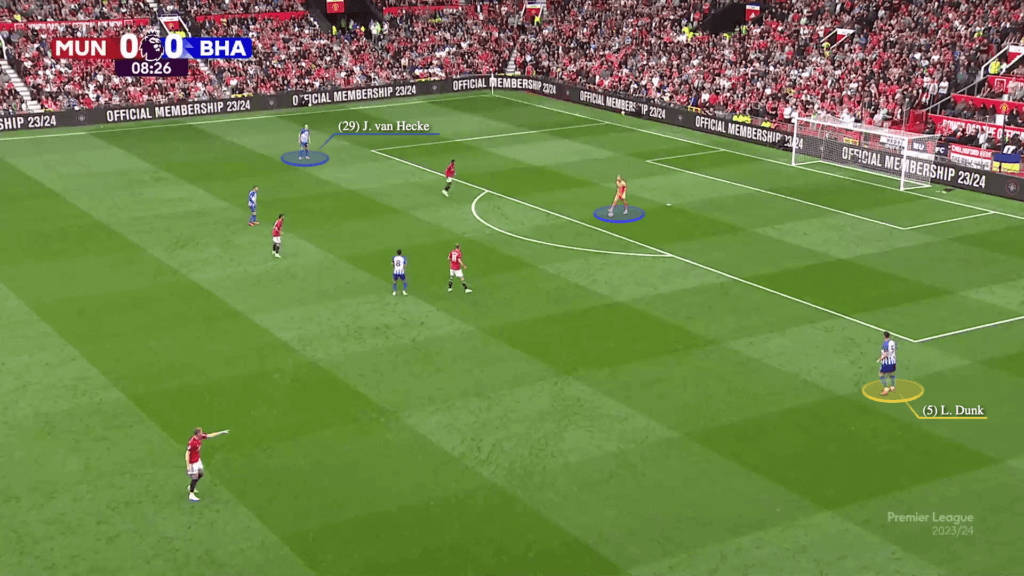
115
Tactical changes are often associated with switches in shape — a back three becoming a back four, say, or a midfield three turning into a diamond. However, it’s not exclusive to that.
Shapes are a way of explaining the positioning of the players on the pitch in simple terms. The dynamic of how a team operates within a given shape is another dimension — two identical formations could attack and defend in different ways depending on the movement of the players concerned with and without the ball.
A tactical adjustment could be a switch in strategy within the same shape, using the same players, by introducing different types of movements or occupying different spaces. Brighton & Hove Albion’s latest win against Manchester United is yet another example of how tactical changes can occur in different ways.
Limited by the non-availability of his wingers, Erik ten Hag’s United entered the game at Old Trafford yesterday in a different formation, moving away from their regular 4-2-3-1/4-3-3 to play a diamond in midfield, with Bruno Fernandes operating at its forward tip, behind Marcus Rashford and Rasmus Hojlund:

Within that shape, United wanted to press Brighton’s 2-2 build-up using only three players, to allow themselves a free man in defence. The idea was for Hojlund or Rashford to press whichever Brighton centre-back had the ball, while blocking the passing lane to one of the midfielders as Fernandes pressed the other one.
Here, Hojlund is pressing Lewis Dunk while blocking the passing lane to Mahmoud Dahoud, allowing Fernandes and Rashford to press Pascal Gross and Jan Paul van Hecke respectively, without worrying about Dahoud:
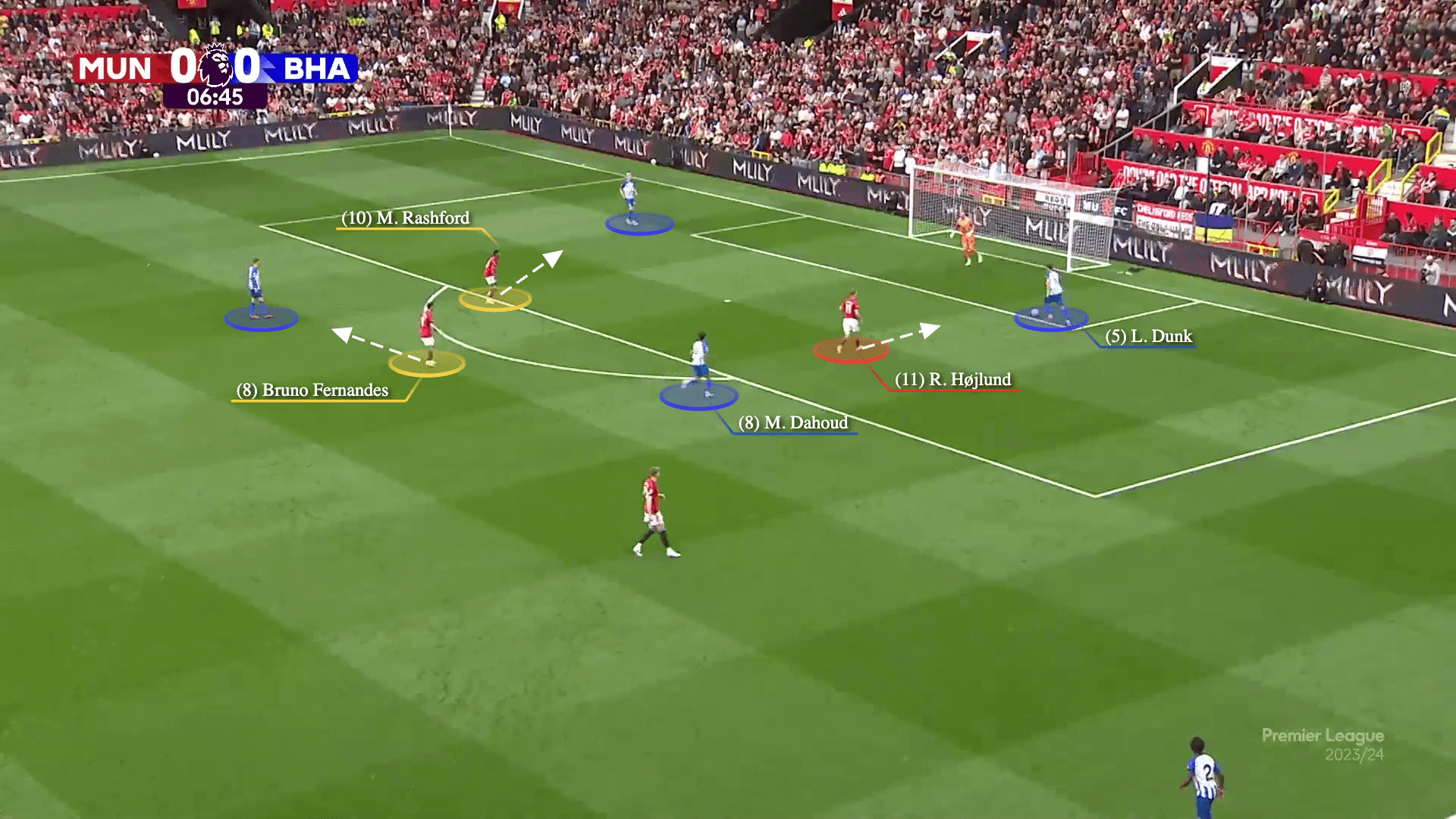
With limited passing options, Dunk plays a ball to Van Hecke…
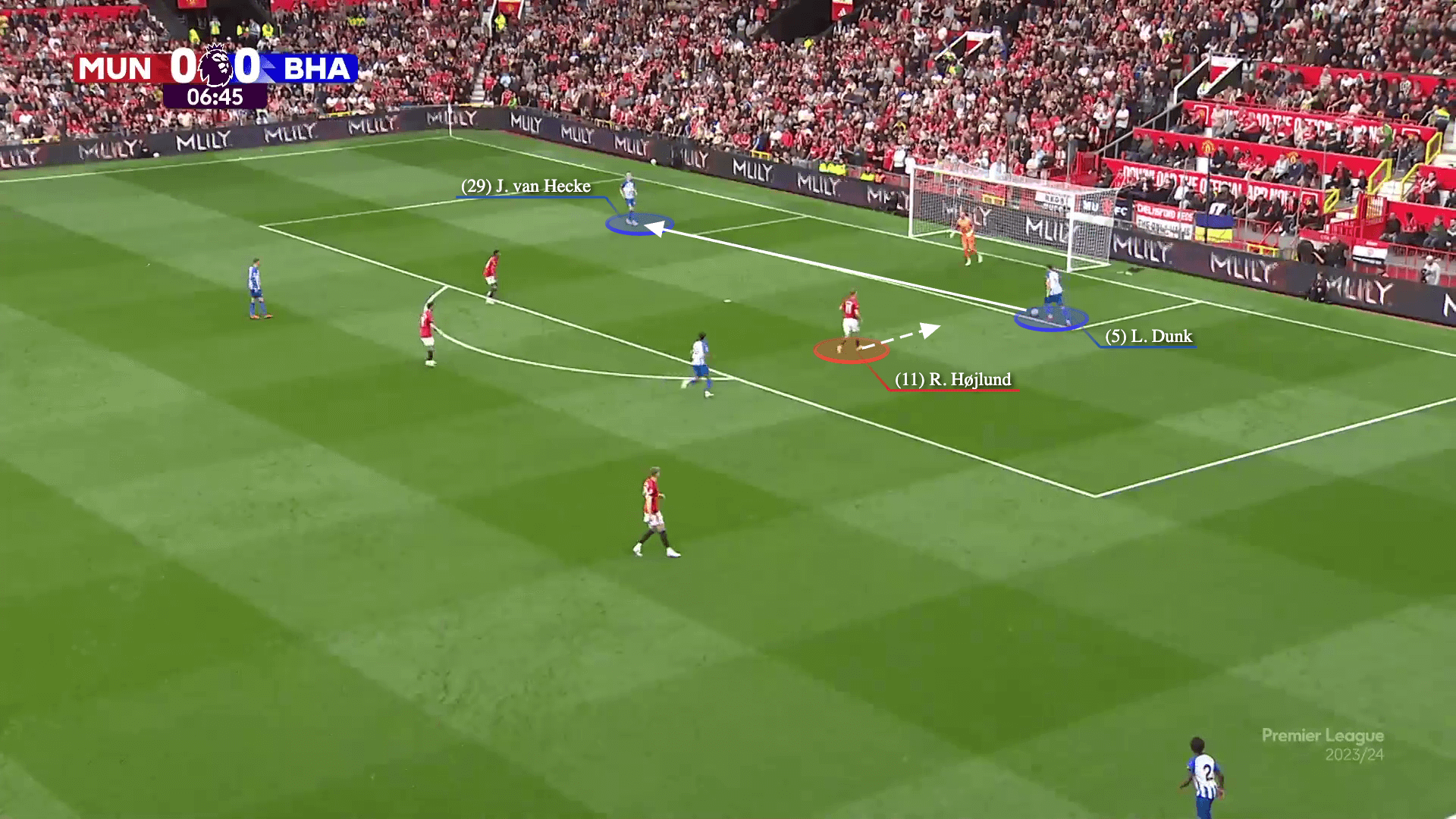
…who is immediately pressed by Rashford with Fernandes marking Gross just outside the penalty area. Further wide, Christian Eriksen, the left midfielder in the diamond, is in a position to press Joel Veltman…

…which is what happens when Van Hecke moves the ball on to his fellow Dutchman, playing as Brighton’s right-back.
As customary with Brighton’s build-up, Danny Welbeck drops alongside Adam Lallana to support, followed by United centre-back Lisandro Martinez. Meanwhile, on the other side of the pitch, Scott McTominay moves inside to help United’s pressing as Brighton couldn’t reach their left-back, Tariq Lamptey, from this position by using only one pass:
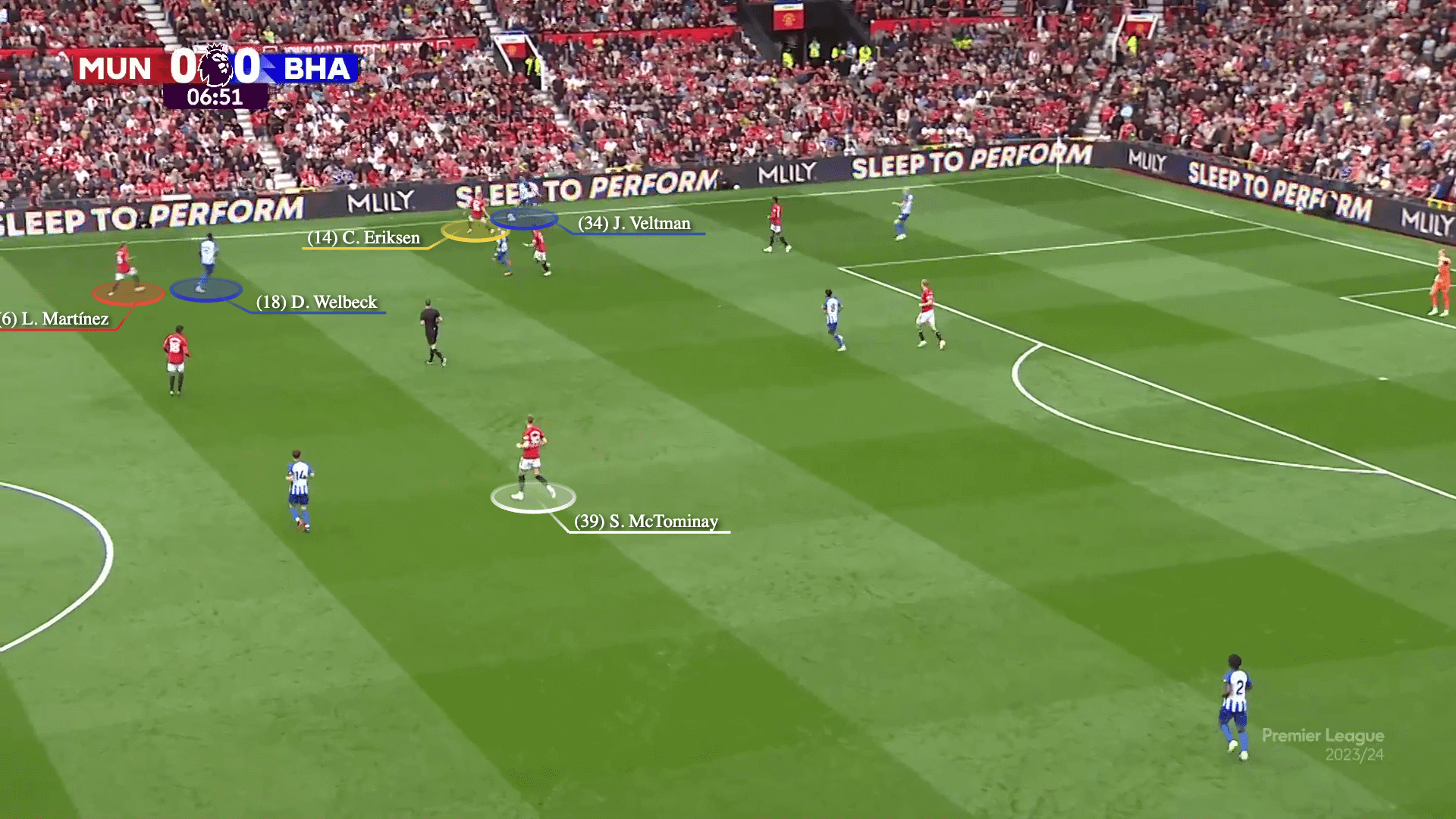
Under pressure, Veltman tries to find Simon Adingra down the line, but Martinez intercepts:
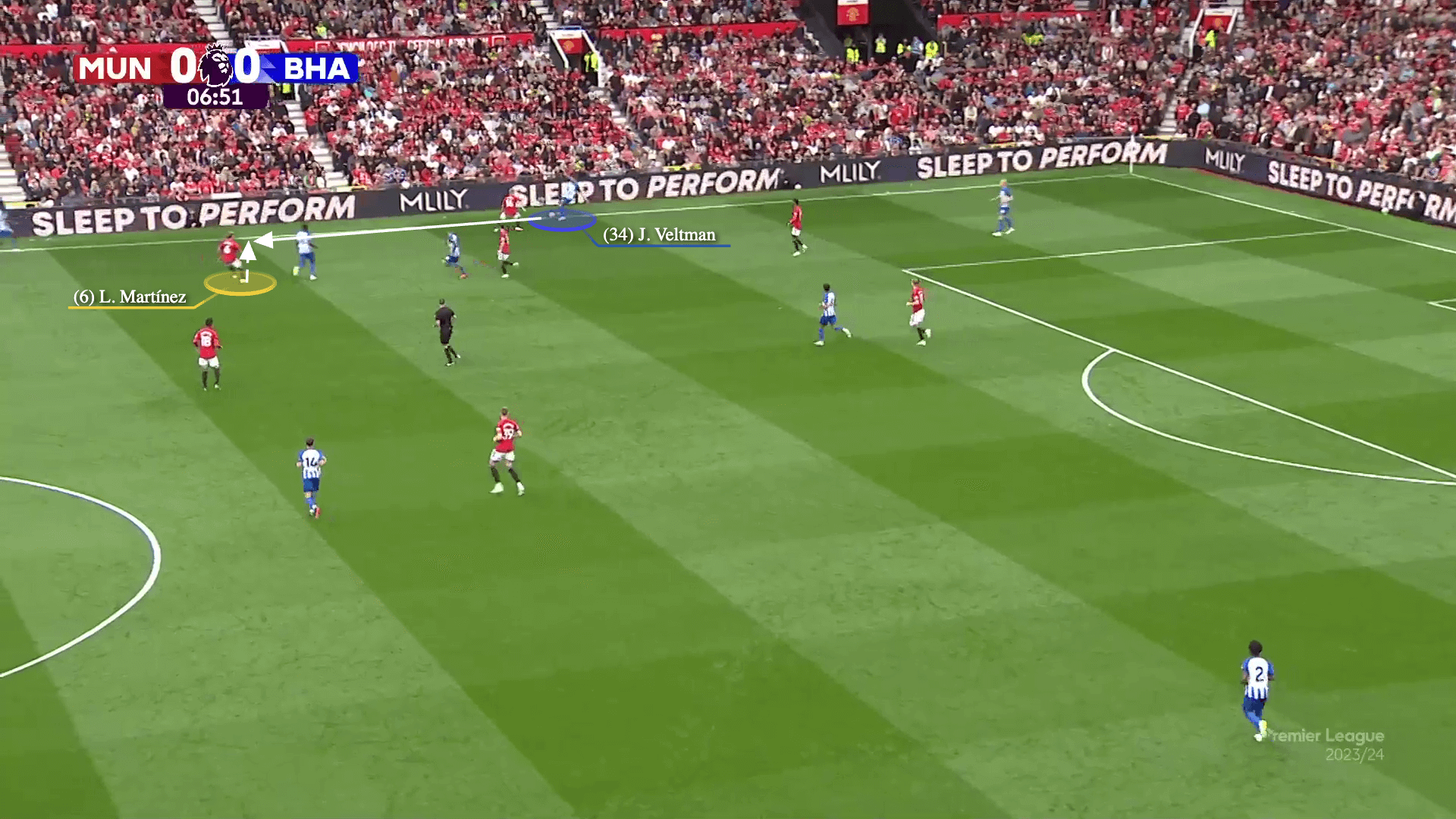
In our next example, the angle from which Hojlund is pressing Van Hecke means the central defender can’t play the ball forward to Dahoud.
As a result, Rashford and Fernandes can press Dunk and Gross without worrying about a pass to the German midfielder. A couple of lines beyond them, Martinez is sticking tight to Welbeck…
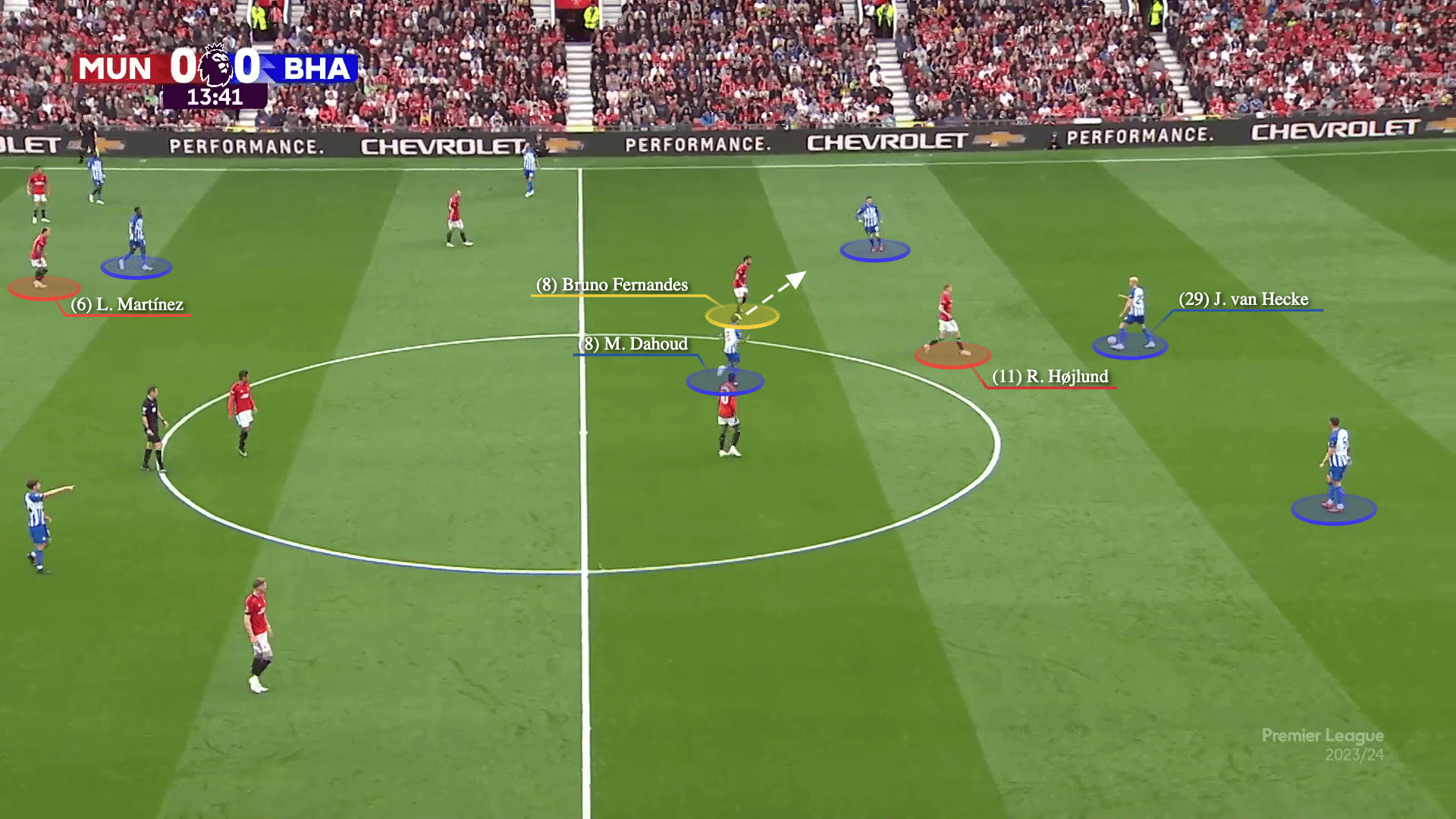
…making it a three-versus-three situation on the far side of the pitch when Van Hecke plays the ball to Gross. This pass triggers a press from Fernandes…

…and with the Portuguese limiting Gross’ time on the ball, Welbeck turns his marker and makes a run into space. The problem for Brighton is that, because United are successfully pressing with one player less further up the pitch, they have an extra player free at the back.
Victor Lindelof, that spare United player, picks up Welbeck’s run as Martinez is calmly signalling to his centre-back partner for them to switch assignments:
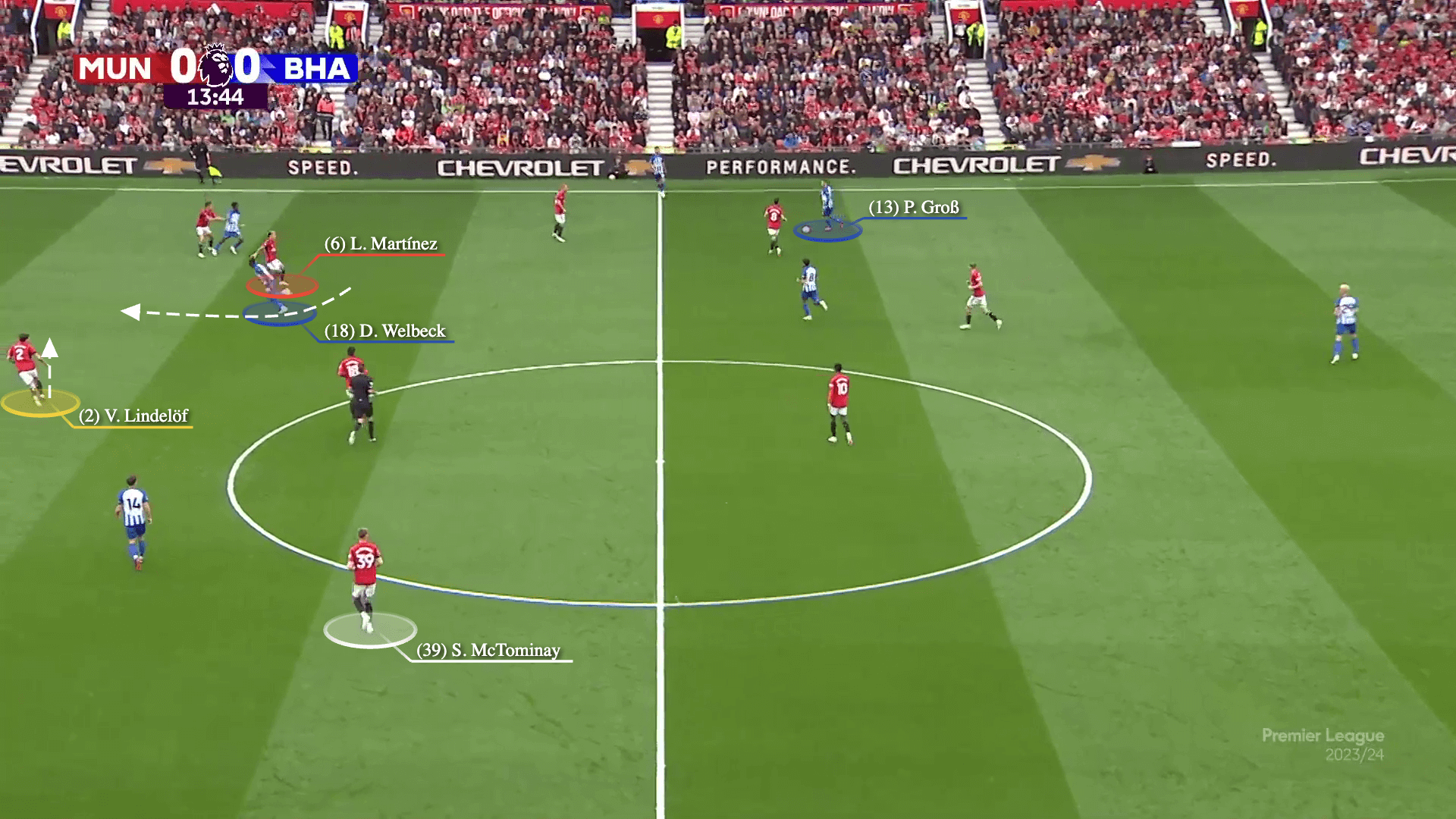
With no clear passing option, Gross passes to Veltman on the touchline, who has Eriksen ready to press him and Hojlund dropping to mark Dahoud. The consequence is Brighton going all the way back to Van Hecke:
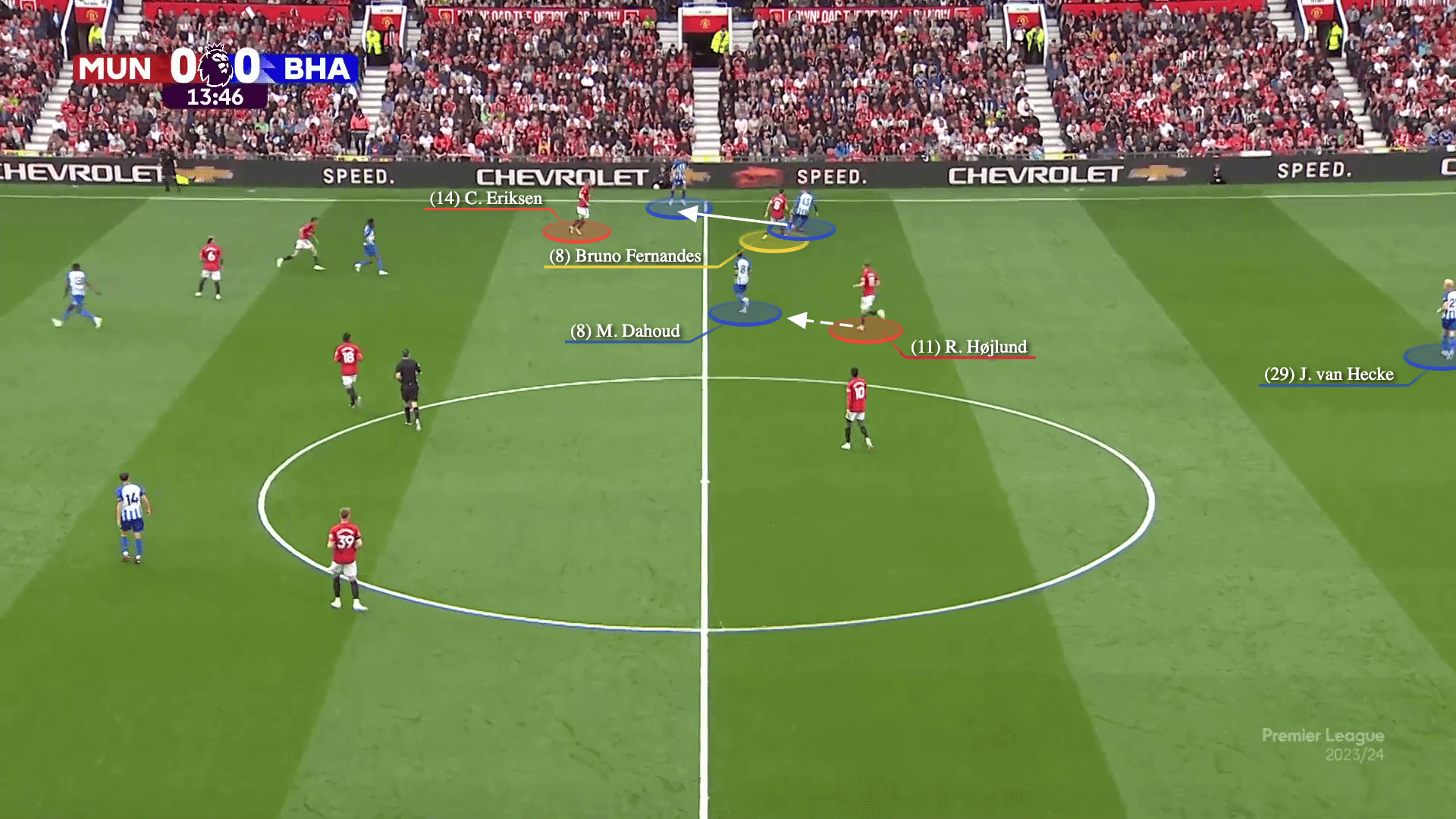
Here’s another example of how United’s pressing worked.
Rashford is pressing Dunk and blocking the pass to Dahoud, allowing Hojlund and Rashford (yellow) to press Van Hecke and Gross. In United’s half, Martinez is again following Welbeck, because the three-versus-four up the pitch is affording the home side a free player at the back in the form of Lindelof.
Dunk goes square to Van Hecke…
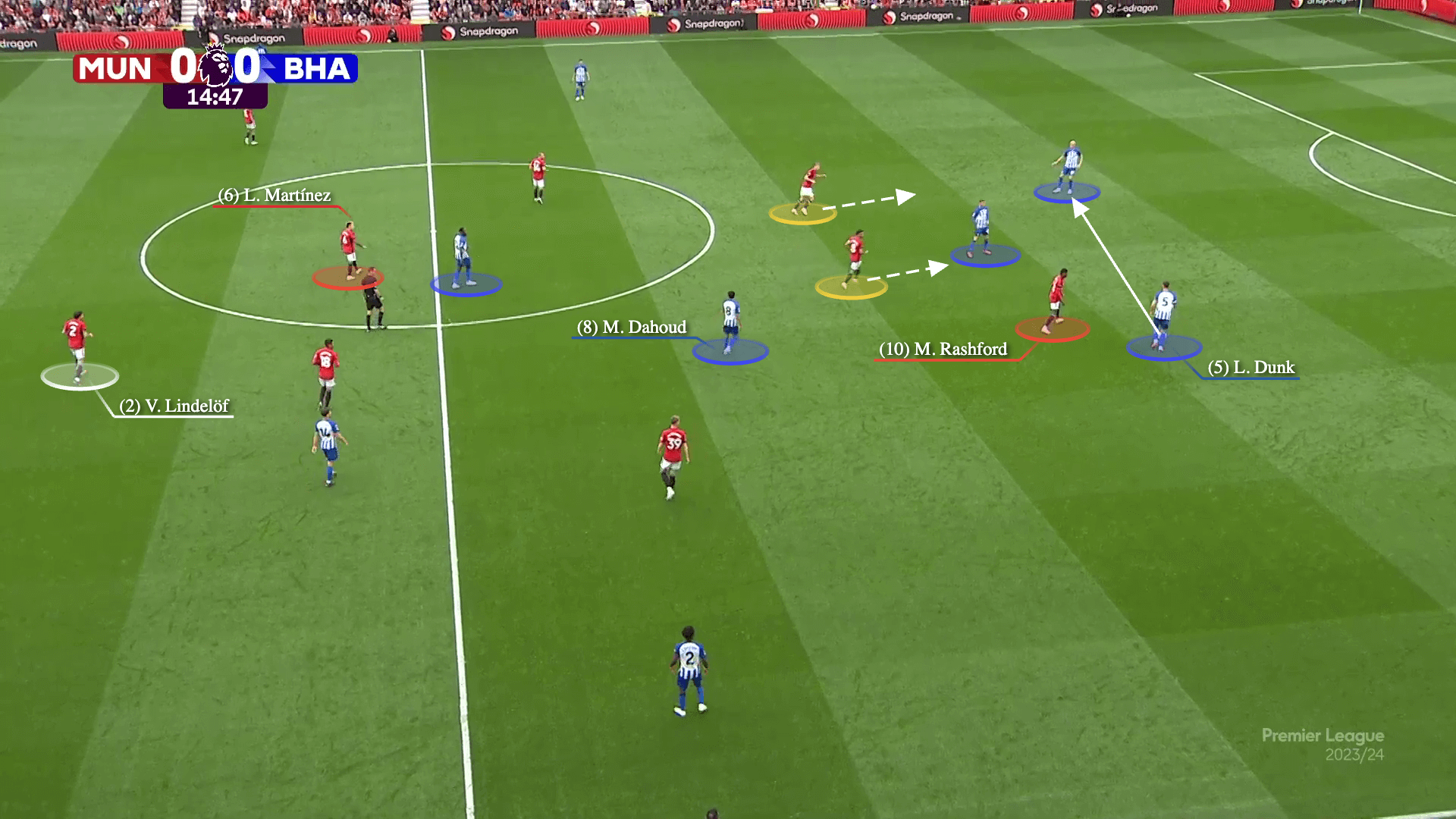
…and the United forwards adjust their positioning to make sure they are still pressing the ball while blocking the passing angles into Gross and Dahoud…
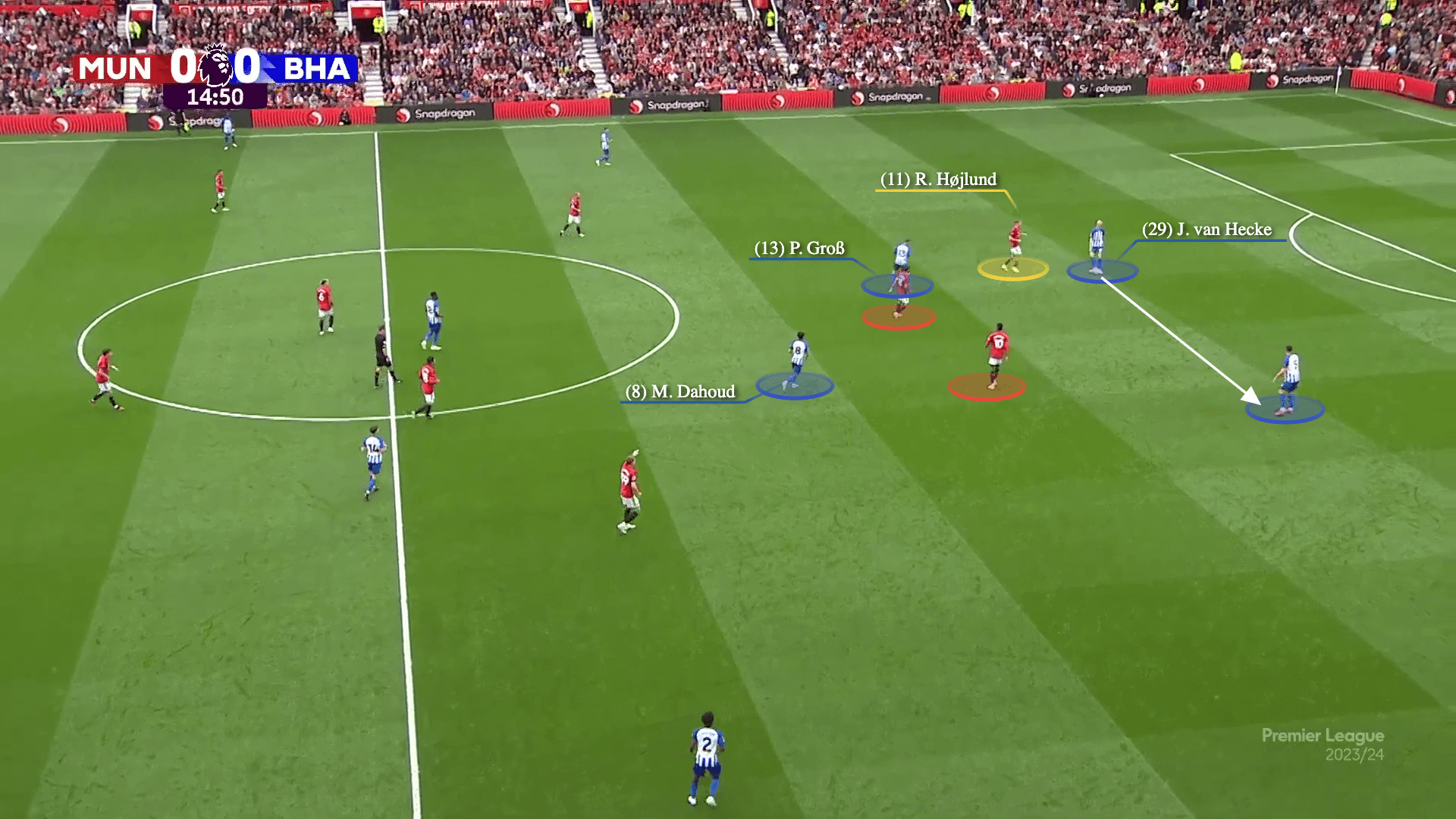
…leaving Dunk with no option but to go long after Van Hecke returns the ball to him.
United managed to regain possession from that pass upfield, but the key thing here is the positioning of Fernandes, Hojlund and Rashford.
Again, Rashford is blocking the passing lane to Dahoud while pressing Dunk, allowing his two team-mates to press Gross and Van Hecke if needed:
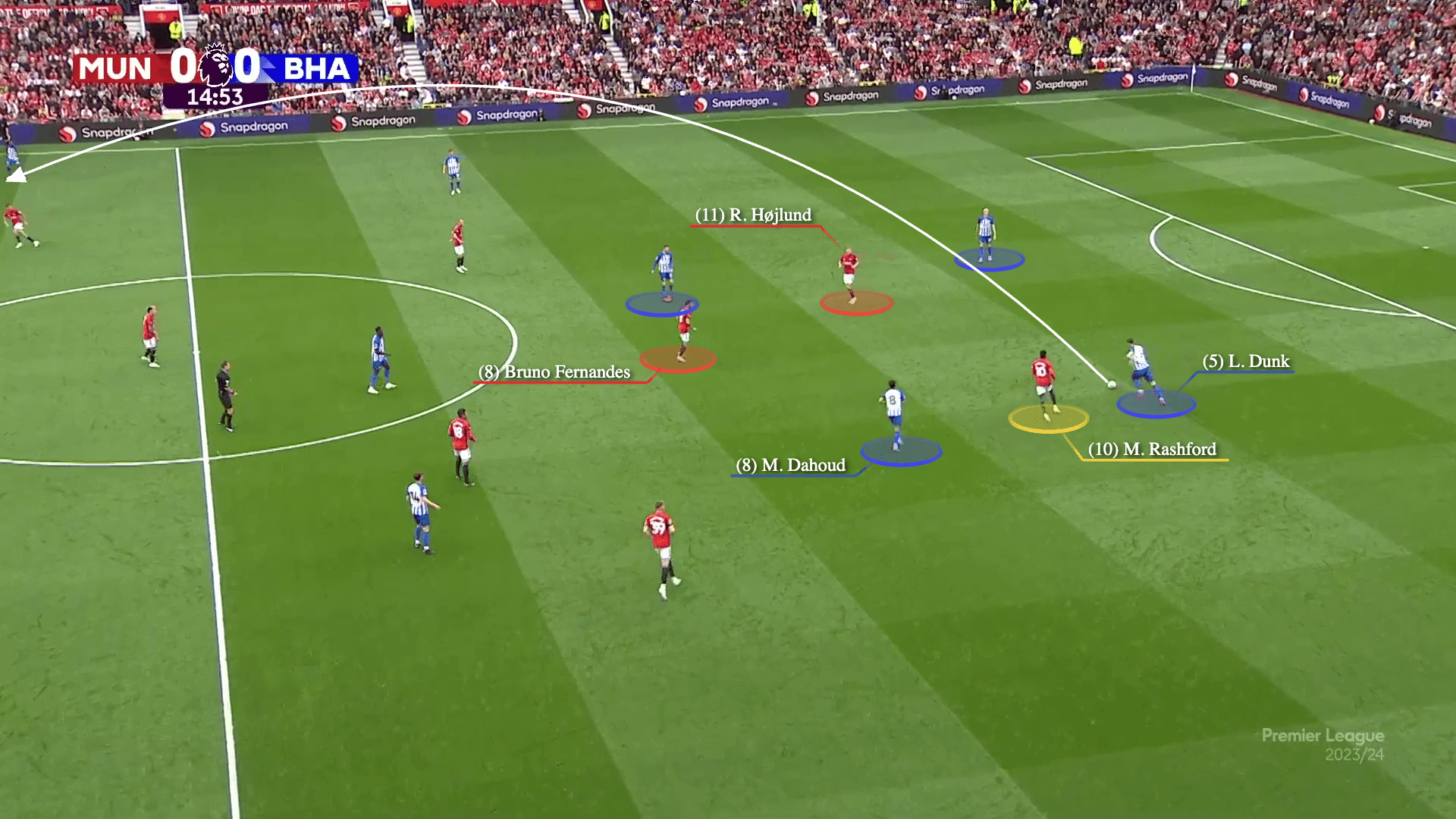
Even when Brighton’s full-backs moved inside and Gross pushed forward, United were prepared. The 4-1-3-2 shape meant they could easily go man-to-man, with Martinez switching his focus to Gross, leaving Welbeck for Lindelof to mark:

“In the first 15-20 minutes, we suffered a lot because Manchester United played in a different way (than) we prepared before the game,” said Brighton head coach Roberto De Zerbi.
However, during that period, there was one instance that might have provided Brighton with a solution against United’s pressing.
In the eighth minute, Van Hecke and Dunk are positioned wider in the build-up as their goalkeeper Jason Steele had the ball. This means the space Fernandes, Hojlund and Rashford have to cover is bigger, so they can’t block the passing lanes while pressing Brighton’s centre-backs with the same ease:
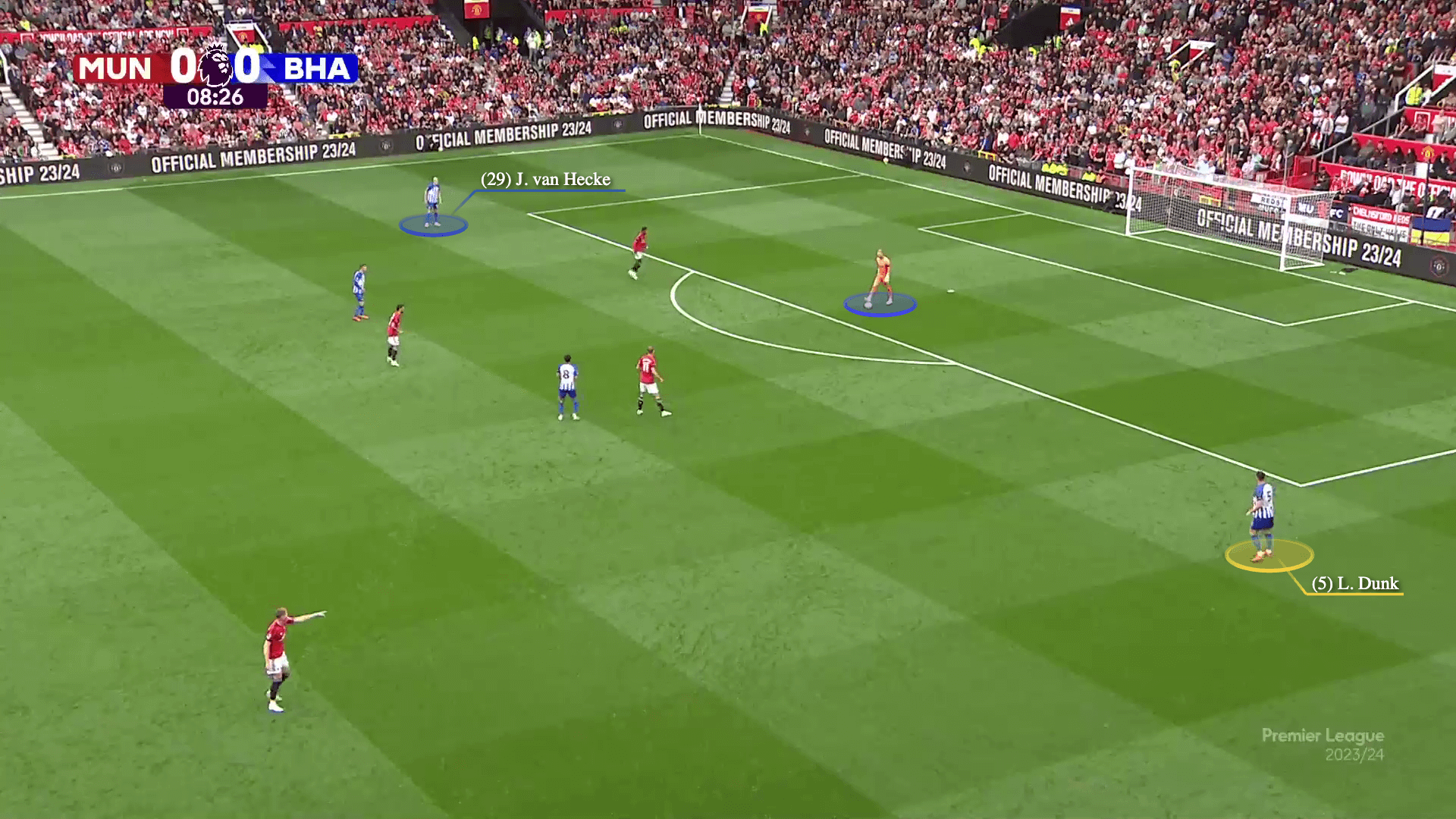
In addition to that, getting Steele more involved in the build-up complicates things further for United’s pressing.
Here, Rashford tries to press the goalkeeper while blocking the passing lane into Van Hecke, but Steele easily finds Dunk out wide while Fernandes and Hojlund are focused on Gross and Dahoud. As for Eriksen and McTominay, they couldn’t leave their position without risking compromising the shape:

Widening the centre-backs and using Steele in the build-up helped Brighton to play through United’s press in this attack…

…and De Zerbi’s message to Dunk after Welbeck opened the scoring might have been the same…
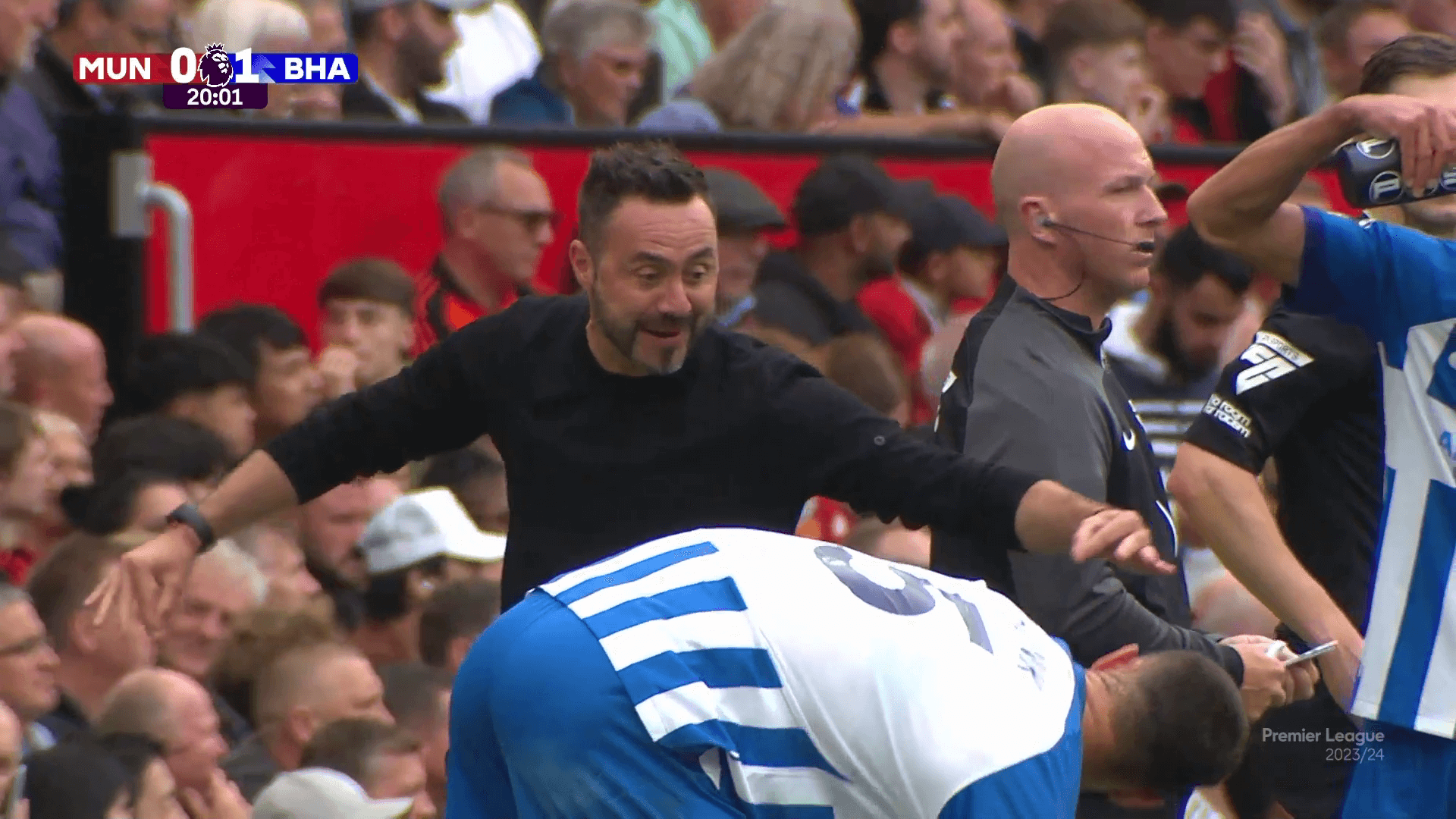
…because after that goal, Dunk and Van Hecke made sure they were positioned wider:

In this next example, Dunk is wide enough on the Brighton left that he isn’t in frame in the image below, and Van Hecke is also maintaining a wide position on the right side as Steele is waiting on the ball.
The difference now compared to the examples above is that United’s forwards have to cover another player in Steele, and more ground because of the spread of his centre-back colleagues…
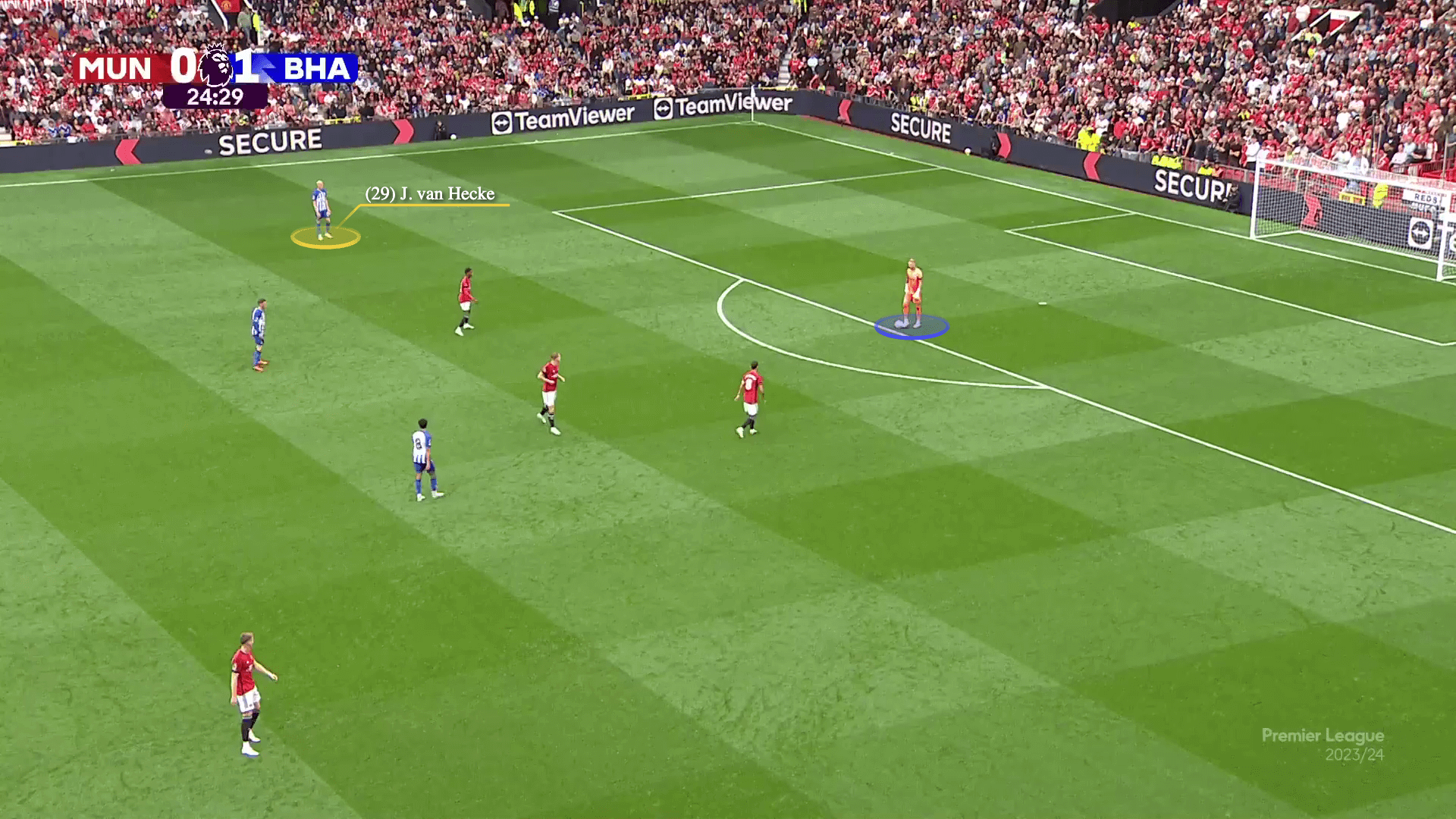
…which makes it easier for De Zerbi’s side to move up the pitch:

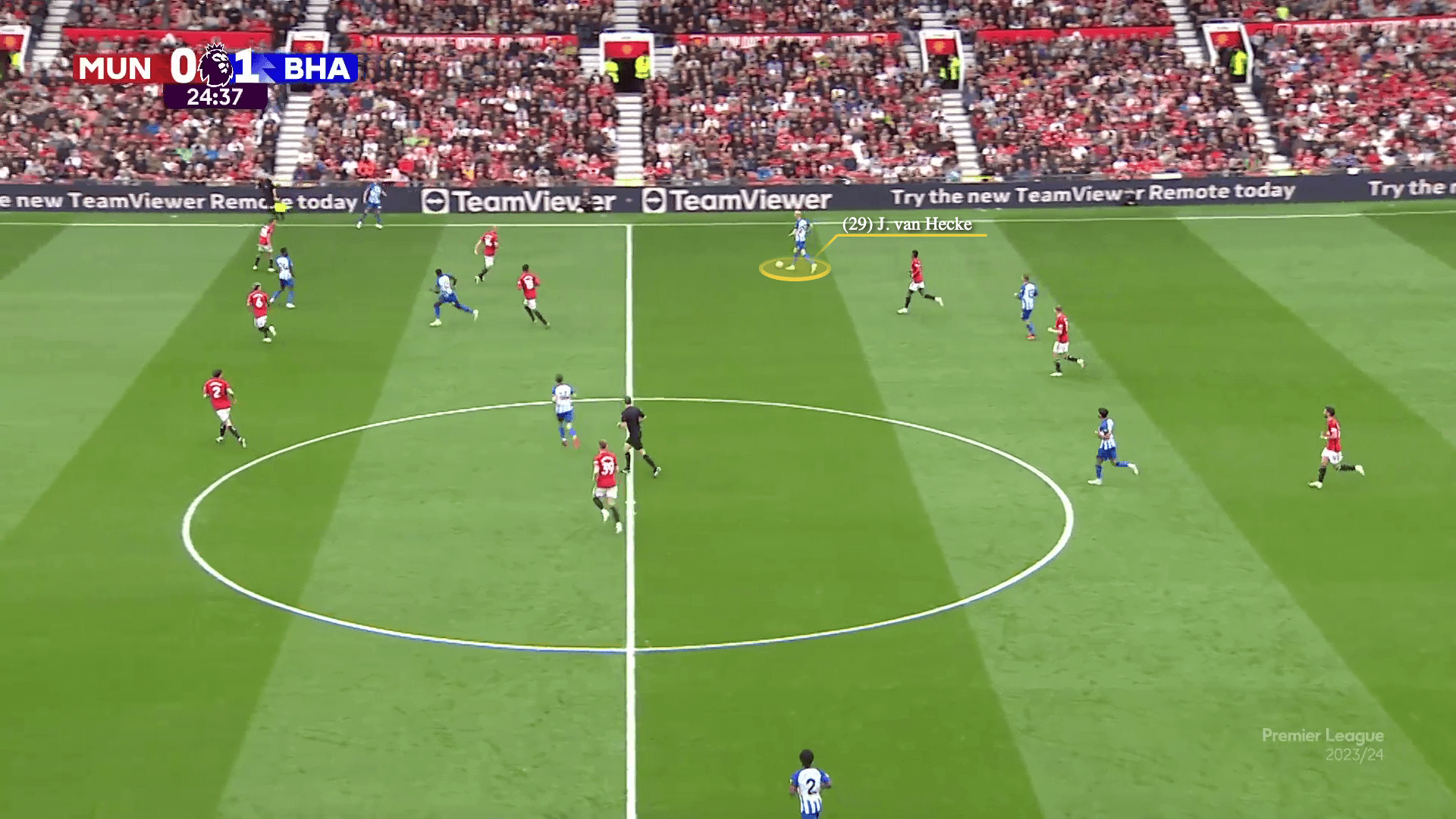
Here’s another example.
Hojlund is trying to press Steele while blocking the passing lane to Dahoud, and Fernandes and Rashford are marking Gross and Van Hecke, with Casemiro trying to help. The issue is that Dunk is completely free on the left because of the great distance between himself and partner Van Hecke…
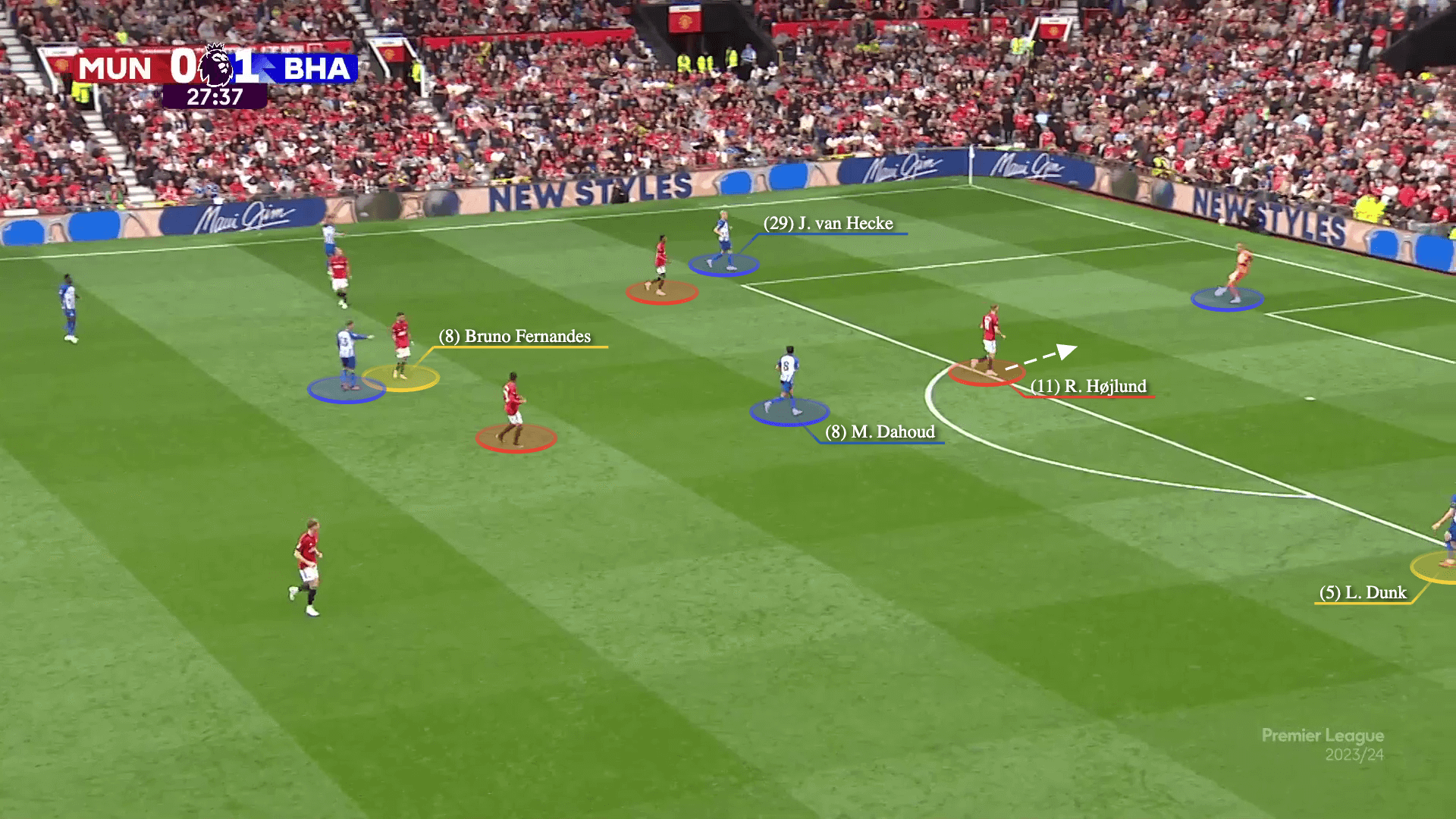
…which allows Steele to play a ball to the England defender:
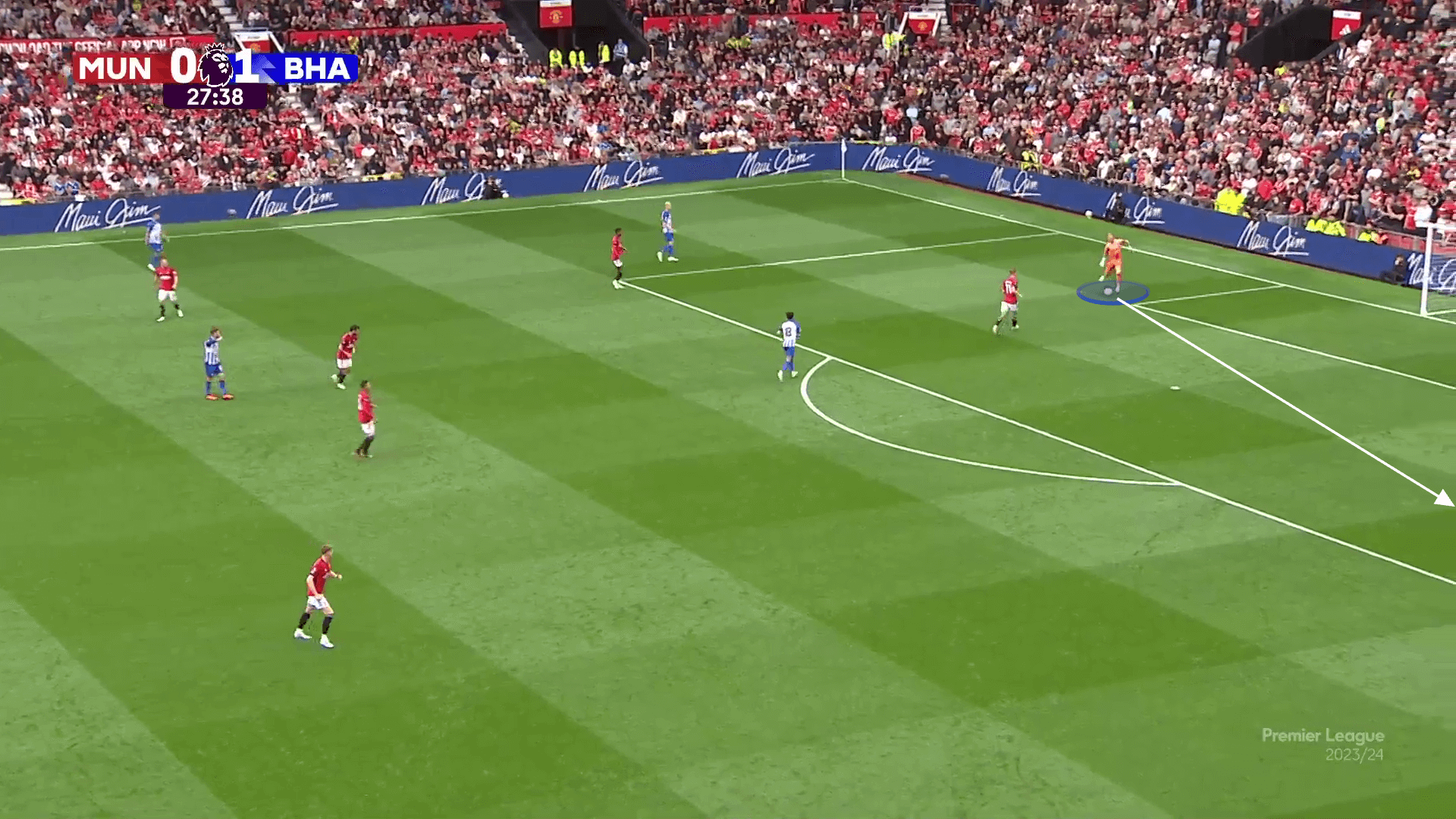
McTominay can’t move up to press Dunk as that isn’t his role:

These two adjustments gave Brighton the upper hand for the rest of the game as United’s pressing could no longer be effective, and in the second half, it was Dunk’s wide positioning that led to the visitors’ decisive third goal.
Here, Brighton’s build-up shape is spread across the width of their penalty area with Gross on the right side and Dunk out to the left. As Van Hecke plays the ball to the German…

…United’s narrow front three move towards their left, leaving Dunk free. Brighton then circulate the ball to the other side of the pitch to find him…
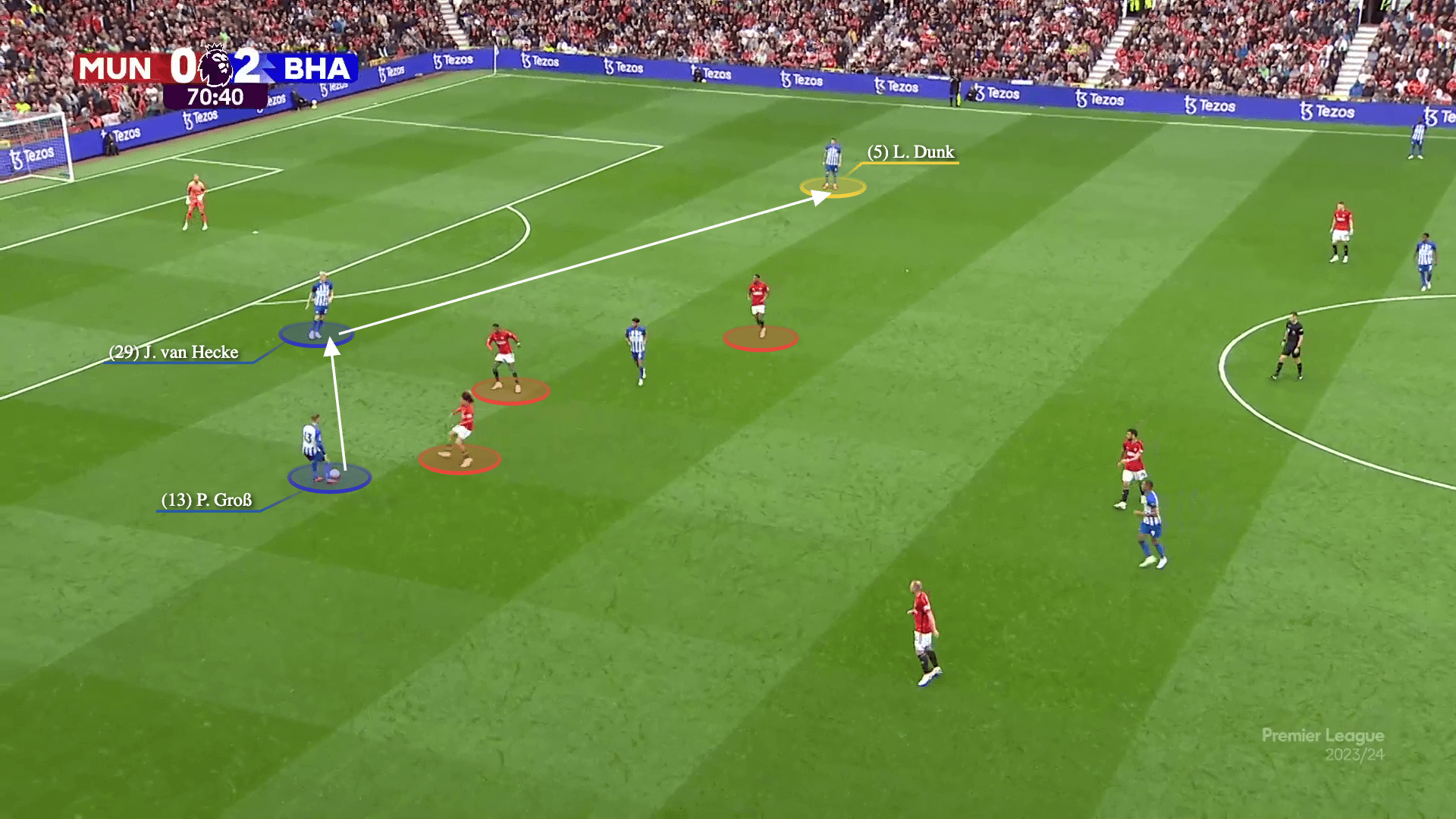
…and he comfortably plays the ball forward for Lamptey…
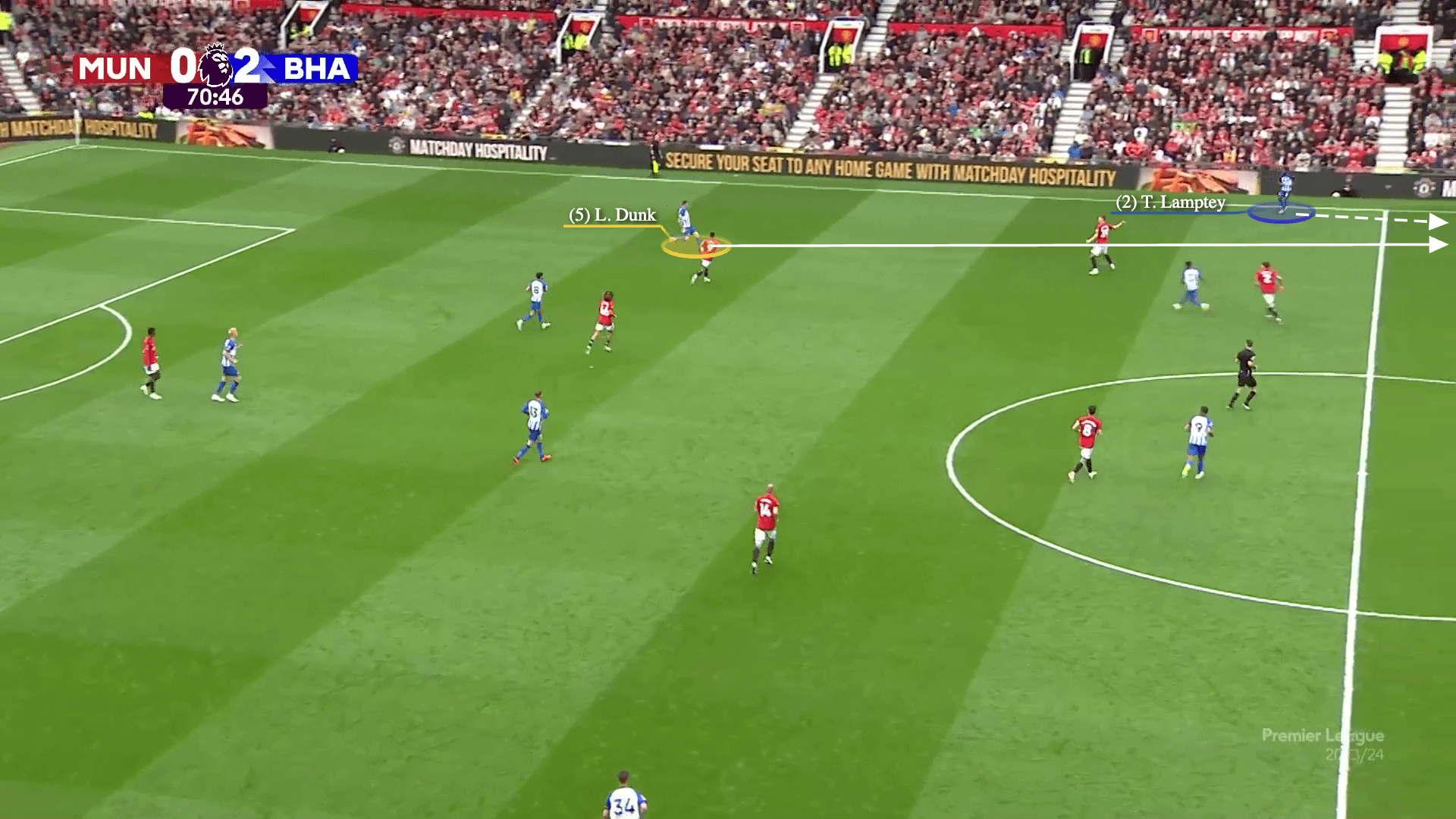
…before the full-back sets up Joao Pedro, who makes it 3-0:
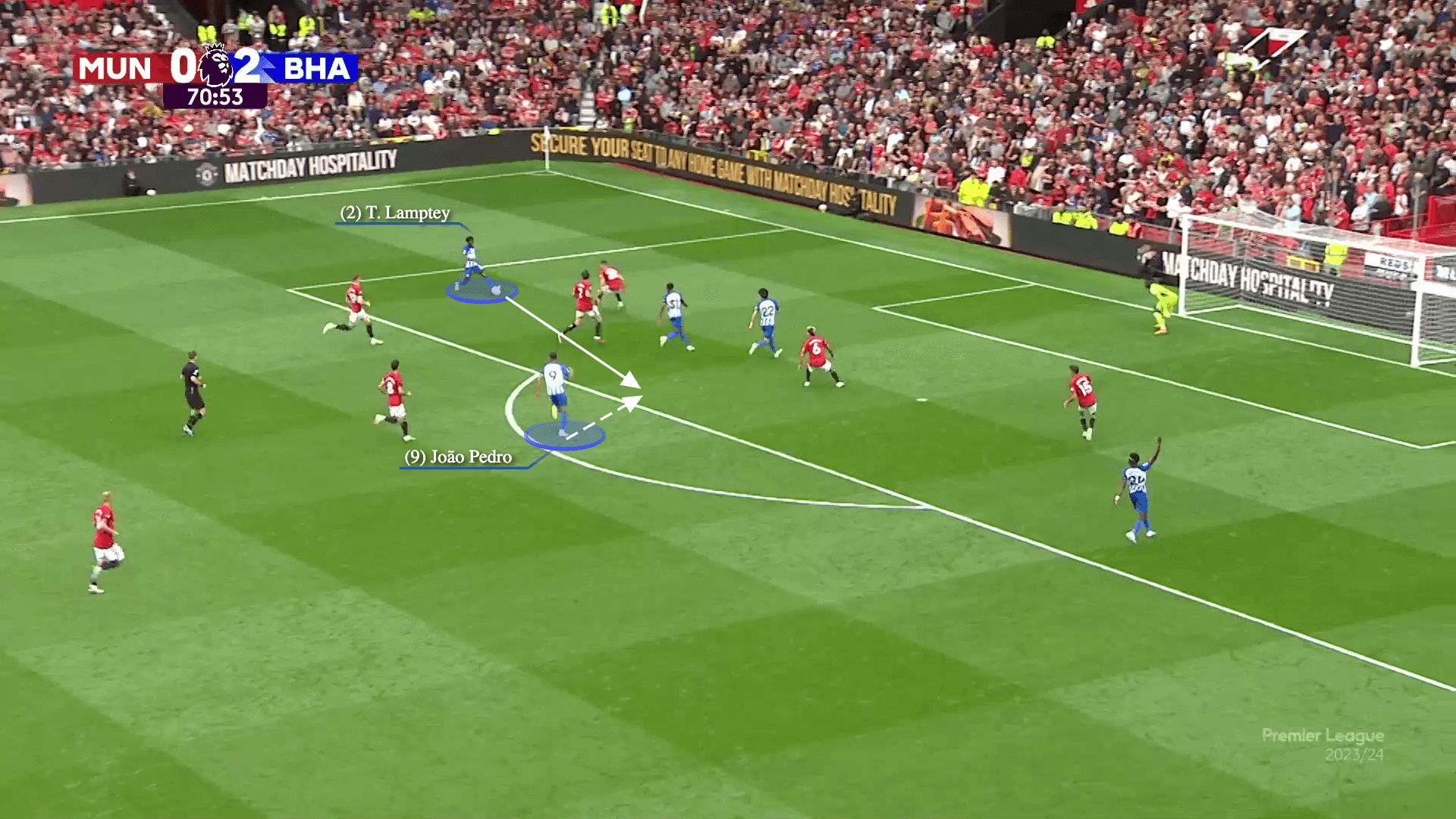
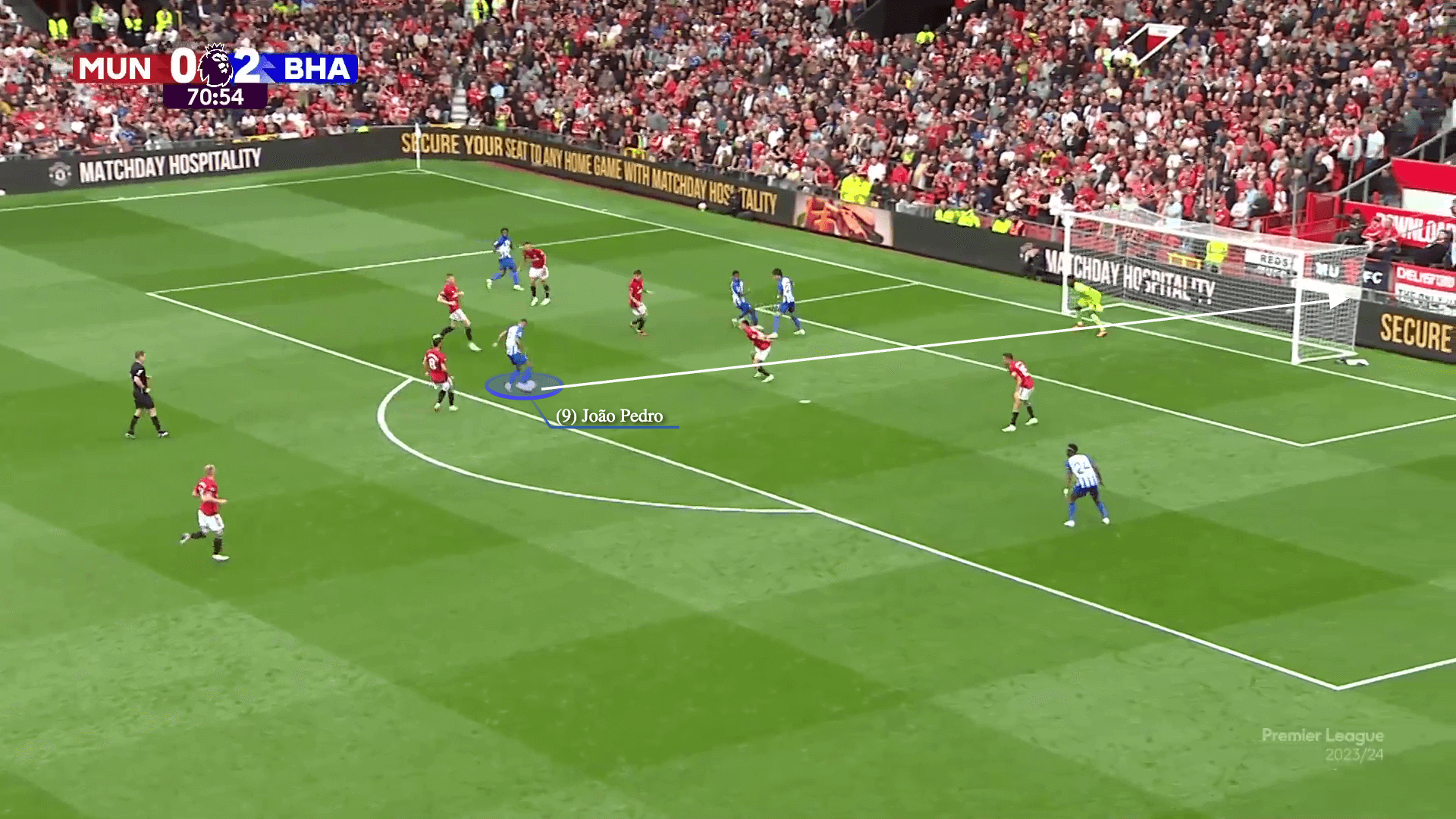
Increasing the distance between their centre-backs and getting Steele on the ball wasn’t a major change in shape but it was a solution that helped Brighton against United’s press, and eventually, gave them control of the game.
Sometimes, keeping the shape and introducing a minor tweak is the right answer.
